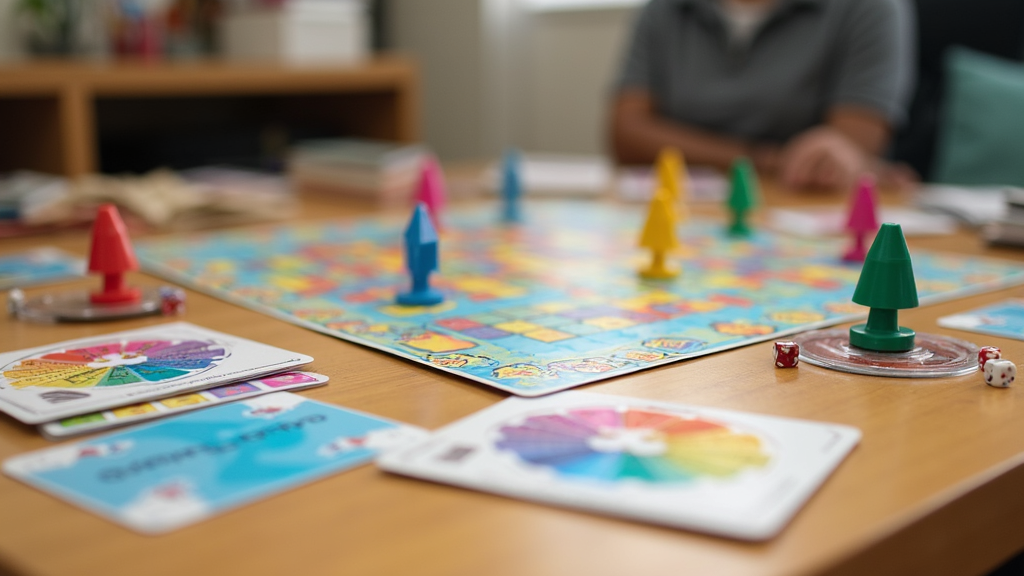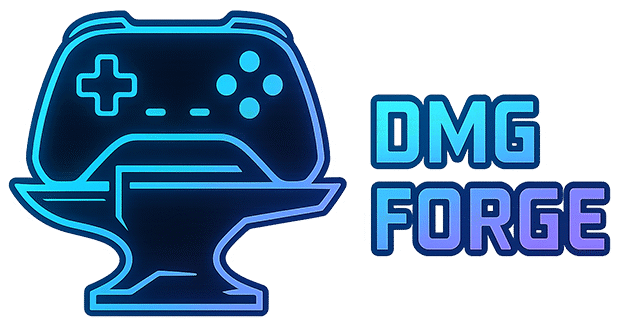Getting into game design can be an exciting ride, but it’s easy to fall into some classic traps that make your game less fun or even totally unplayable. I’ve run into a lot of these firsthand, so I want to walk you through some of the most common game design mistakes I see, why they happen, and some pretty straightforward ways to dodge them.

Common Mistakes Beginner Game Designers Make
Most new game designers have big ideas and loads of energy, but a few basic mistakes can hold a project back. Here’s what I’ve seen pop up the most (and what you can do instead):
- Trying To Do Too Much At Once
Jumping into a huge MMO or supercomplex strategy game right out the gate is super tempting, but finishing smaller projects first helps you learn faster. Starting small really matters, because it lets you see the whole process and spot issues without getting swamped. - Poor Game Rules Explanation
If players can’t figure out the rules in a couple of minutes, they’ll usually move on. Aim for clear instructions and quick, easy reference. Testing your rulebook with friends who weren’t part of your dev process is really helpful. - Ignoring Player Feedback
It’s easy to get defensive when someone says, “I don’t get it” or “This isn’t fun.” Honest playtesting and watching how others interact with your game (without explaining or interfering) uncovers a lot of stuff you can fix. - Messy Balance
Games that are way too easy or impossible to win become boring or frustrating really fast. Even simple games need careful tweaking. Keeping detailed notes during playtests and looking out for dominant strategies can help keep things balanced.
Working through these early stumbles helps you grow as a designer and makes your future projects much smoother. Another mistake beginners make is overlooking the power of theme and story. If you glue mechanics together without a strong central idea, the game can feel directionless and forgettable. Experiencing your own work from a player’s perspective helps you track down these sorts of issues early on.
Key Game Design Principles and “Rules of Thumb”
Plenty of designers talk about unofficial game design rules or guidelines you can use to spot trouble early. Here are some that come up a lot:
- The 40 Second Rule
This solid guideline suggests that the player should be able to start playing the game (not just reading instructions) within 40 seconds of being introduced. The faster someone gets to play, the faster they get hooked. If your game takes ages to explain, consider trimming complexity or breaking rules into chunks players can learn as they go. - The Seven Game Design Rules
Depending who you ask, these rules might switch up, but here are the basics most people tend to include:- Keep game mechanics simple and easy to grasp
- Balance skill with luck to maintain excitement and fairness
- Set clear objectives so players understand what they’re aiming for
- Give meaningful choices that let the player feel in control
- Make sure the interactions are engaging and not repetitive
- Test and tweak for player feedback regularly
- Keep the ‘fun factor’ front and center; it trumps everything else!
- The 20 Rule in Gaming
This concept pops up mostly in tabletop RPGs like Dungeons & Dragons, where rolling a 20 on a twentysided die is a critical success, leading to something great happening. In design, it’s a reminder to add moments of excitement— a huge win, a cool comeback, a rare powerup— to keep players invested. - The 7 Second Rule Game
This is more of a party game where players must complete a silly task in seven seconds. From a design standpoint, adding time-pressured moments like this can really boost energy and focus during gameplay. It’s a neat reminder to think about pacing.
All these “rules” basically help you make games easy to approach, fun to stick with, and packed with little moments that keep players engaged. Remember, these guidelines are not hard laws, but they do reflect the lessons learned by many designers who have faced similar challenges over the years.
How to Avoid Classic Game Design Errors
Every designer hits snags, but there are some neat tricks that help lower your risk of big mistakes:
- Prototype Fast and Early
Get a very basic version (even just cards or paper!) on the table as soon as you can. Don’t worry about fancy art; raw mechanics matter more. - Playtest With Fresh Eyes
Ask friends, family, or even strangers to try your game while you watch without explaining or backseat driving. Their confusion or frustration is feedback you need. - Fix Rules Based on Questions
Every question or misunderstanding in playtesting usually points to something in your rules that might need rewriting or clarification. If several people get stuck in the same spot, that’s a sign it’s time to simplify. - Start Small
Create a short, selfcontained version of your game first. Once that works, expand features or story as needed. Avoid layering too many ideas at the start. - Balance Play and Luck
Combining skill and randomness keeps play dynamic and fun. Too much luck can frustrate planners; too much skill might drive away casual players. Mix both for lasting appeal. - Steal Like an Artist
Study your favorite games, figure out what works and why, then remix those ideas for your own projects. Most great designers build on each other’s ideas.
Careful research, a lot of playtesting, and listening closely to feedback will take you a long way toward building better games. Always be willing to trim unnecessary features and polish core mechanics, as focusing on fewer elements will boost the overall quality and fun of your finished product.
Why Game Design Is Tricky (And How To Work Around It)
Game design seems easy at first; just make something fun, right? Turns out, it’s a pretty tough challenge because you’re juggling creativity, technical knowhow, playtesting details, and tons of small adjustments. Here’s why it feels hard to get right sometimes:
- Too Many Options
The possibilities for themes, rules, and interactions are basically endless. Paring down ideas to something simple can be tough. - Player Expectations
People bring their own tastes and expectations (sometimes from games you’ve never even heard of!), which can mess with your designs in ways that aren’t obvious until after launch. - Hidden Bugs and Balance Issues
It’s not always clear when a rule set or mechanic isn’t working. Some issues only pop up after dozens of rounds, or when playing with different personalities. - Hard Truths
Realizing something you worked hard on isn’t that fun stings. The trick is learning to see that as a normal milestone and not a failure.
Sticking with it and welcoming all the ugly feedback is the part most people don’t talk about, but it’s super important for making games that click with lots of people. Embracing open communication, staying flexible, and being able to walk away from ideas that aren’t working are all part of the process.
Extra Tips and Common Game Design FAQs
I get these questions all the time from newer designers, so I’ll run through some quick answers here:
What is one mistake beginner designers make?
One of the biggest errors I notice is trying to cram in way too many features or mechanics, which leads to a game that’s hard to play or teach. Picking one or two strong mechanics and polishing those is usually a smarter approach.
How can two people play 30 Seconds?
Yep! While 30 Seconds is usually played in larger groups (as a party game), you can play it with two people by each taking turns as the clue giver and guesser, or even splitting an imaginary timer. It’s a good reminder that adapting games for different group sizes can really stretch your design skills.
How do you avoid design errors?
Quick prototyping, regular playtests, taking notes on common stumbling blocks, and being willing to cut features helps patch up most design mistakes. Never be afraid to ask peers for honest feedback.
What’s the 20 rule in gaming?
Mostly known from D&D or other tabletop RPGs, rolling a 20 on your die is usually a huge success, sometimes with fun or surprising results. Including a “lucky break” mechanic, even in board or video games, gives players moments of excitement and can save a play session from bad luck or monotony.
What are the 7 game design rules?
In game design, these usually cover things like clear rules, simple mechanics, balanced skill and luck, clear objectives, engaging interactions, player choice, and regular feedback/testing. Keeping these in sight is a smart way to build replayable games.
What is the 7 second rule game?
This is a party game where each player is presented with a task they have to complete in 7 seconds. In a broader sense, adding short, high-pressure moments to your game design (like minichallenges) can boost excitement and engagement.
Why is game design hard?
Game design gets tricky because you’re mixing creativity with logic, taking on feedback, balancing mechanics, and constantly changing things when they don’t work. Progress can feel slow, but that’s normal. Each finished project gets a bit easier as you pick up more tricks.
Real-World Examples That Teach a Lot
- Board Game Design
Even huge hits like Settlers of Catan started out way more complicated than the finished version. Through playtesting, rules got trimmed or changed, and that led to a game people keep playing decades later. - Video Game Design
Indie hits often began as supersmall prototypes that only did one thing really well. From there, creators added to and polished based on feedback.
Following the process—test, listen, tweak, repeat—works whether you’re into digital games, tabletop, or anything in between. Looking into the behind-the-scenes glow-ups of games like Stardew Valley or Splendor reveals how much those early, messy drafts mattered.
Building Good Habits For Future Projects
Every finished game, even the flops, teach you something about the process and what you enjoy making. Starting small, keeping open ears for feedback, and treating every failed mechanic like a lesson, not a waste of time, is pretty valuable. The more you practice, the better you spot hidden problems—and the more fun your next projects will be! Remember, game design is an adventure. Stick with it, keep making and playing new things, and enjoy every step along the way as you level up your designing skills.
